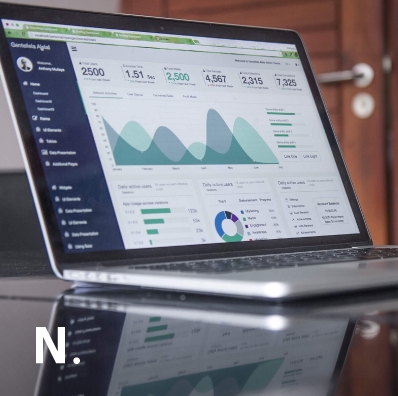It’s no surprise that the COVID-19 pandemic has accelerated the influx of seniors onto the web, yet, a year on, it is still the case that few businesses seem to have a digital plan to help their new audience.
Between 2016 and 2020 the number of seniors with smartphones, who browsed the web daily increased from 50% to 81%, according to a major study by Ericsson.
The ONS, meanwhile, believes that internet usage amongst seniors has changed from 29% in 2013 to 54% in 2020.
Both of these figures are from studies conducted before the COVID-19 pandemic, but Ericsson’s initial data, anecdotal evidence and popular forecasts suggest that COVID has further accelerated an influx of older users onto the web.
Whichever way you look at it, the ‘silver pound’ is going digital.
A warm welcome?
But whilst seniors are navigating online, the digital marketplace at large appears to be doing an almost universally bad job of navigating seniors.
The Web Content Accessibility Guidelines, designed to make sure that websites are suitable for older users, have a historically low take-up. Just 10% of websites are estimated to meet the guidelines.
There are few reliable figures covering what newly digital seniors think about the web once they get there. Given the above, however and the fact that of those still not on the internet 84% avoid it because of a lack of skills or because they don’t deem it useful or interesting, it feels fair to assume that the seniors heading to the web are not entering a world which has considered what they need.
The online equivalent of the grocery shop
Put yourself in the shoes of your mum or grandma, entering a new supermarket for the first time.
This is an activity, by the way, which Ericsson says 50% of seniors consider to be “heavy work” and “boring”.
Whilst your elderly relative is carrying out this “boring” task, they will have questions.
Where is the sugar? How can I book a taxi to get me home? Can you help me to reach that item from the top shelf?
Supermarkets are well set up to provide answers to these questions. Not only do they have store assistants on hand, but most have also thought thoroughly about providing for their audience. Direct line phones to the local taxi company are a common site in any local supermarket.
What is the digital equivalent?
Well, Age UK mystery shopped 100 local councils. Bear in mind here that the public sector does typically have specific requirements to consider older users, as well as lengthy planning and procurement processes, supposedly to assure suitability.
Age UK found that 41 of the councils told them that benefit claims could only be made via the internet and that of those 41, 14 offered no support whatsoever in completing a claim, even when the user specified that they had never used the internet.
If it’s that bad in the private sector, excluding a huge number of users based on digital experience and access, then what must the experience be for seniors on commercial websites?
The ‘second billion’ of seniors is coming… but will it be to your website?
Beyond compassion for our elders there is reason for businesses to care about digital strategy for seniors.
As the population ages, we are due to see the ‘second billion’ of people aged 60 years and over. By the time we reach 2050, the number of seniors will have tripled compared to the year 2000.
That is a huge number of newly online potential customers who are not digitally native and need assistance online.
Those companies that provide that assistance will benefit from a competitive advantage in attracting a major market segment. Or, as the Ericsson report puts it:
“Many companies and institutions are starting to look at seniors as an interesting single, socio-demographic group, due to the increasing number of seniors in society.”
The changing face of ‘silver digital’
Unsurprisingly, a number of businesses are heeding the call of the silver pound and adapting their offering accordingly.
For those yet to begin, the changes can be subtle at first.
Seniors, according to numerous surveys, do not like or understand chat bots, for example, but they do value human input and interaction. Ensuring chat operators are real-life people is critical and bonus points are available for businesses that enable voice or video chat on their websites for instant assistance.
More mature digital strategies for seniors are emerging.
Solopress, an online printing business, will build your order for you and send a link across so that you can checkout. Digital natives will prefer to use the design tools but for senior users, the assistance on offer can be a game changer.
For the company there is some expense and that is unavoidable. Human assisted orrders involve more time and manual input and that is exactly the thing that businesses have been desperately trying to get away from. But the marketplace for senior digital users is about to swell to upwards of 2 billion individuals, so for those with a sound strategy in place, it could be money well sent!
Seniors are ready for digital so it’s time to step up and make sure your website and digital services are ready for seniors. If you need help with website accessibility get in touch at hello@numagoo.com




